#japanese mystery
Text
Unnatural (アンナチュラル) is a Japanese drama from 2018 composed of 10 episodes. When the cause of death remains ‘unknown’ or when the victim remains unidentified and unclaimed, the forensics team at UDI finds the answers. Certainly was a fun watch for the family of an evening and the crimes themselves were relatively well written. By and large the causes of death and motives were unusual and it offered something new. I think I still like Galileo or Mr. Brain better in terms of ‘scientific-themed’ mysteries . . . but this was still a cool drama to watch.
Have you seen Unnatural? What did you think?!
#FilmReview#film#movies#JapaneseFilm#JapaneseDrama#Jdrama#JapanDrama#AsianDrama#Mystery#DetectiveShow#CrimeShow#MysteryFilm
#film#film review#movie review#mystery tv#crime tv#tv review#japanese mystery#japanese film#jdrama#japanese drama#asian drama
4 notes
·
View notes
Text
YURI!!! on ICE the movie : ICE ADOLESCENCE Officially Canceled

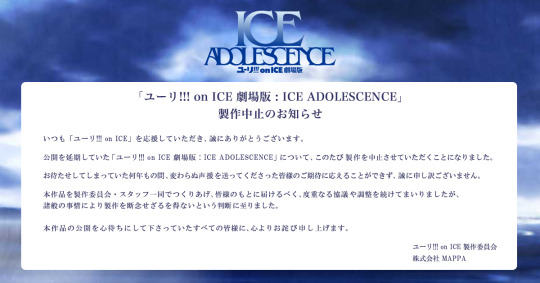
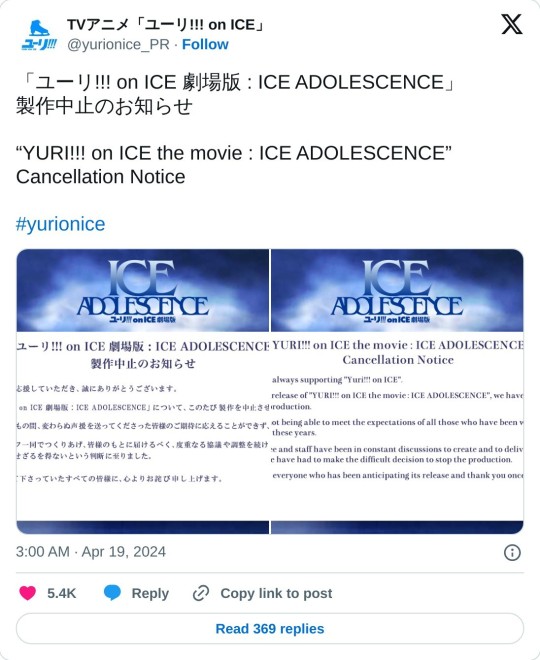
YURI!!! on ICE the movie: ICE ADOLESCENCE Cancellation Notice
Thank you very much for always supporting "Yuri!!! on ICE."
Regarding the postponed release of "YURI!!! on ICE the movie: ICE ADOLESCENCE," we have come to the decision to unfortunately cancel its production.
We deeply apologize for not being able to meet the expectations of all those who have been waiting and have continued to support us throughout these years.
The production committee and staff have been in constant discussions to create and to deliver the movie, but due to various circumstances, we have had to make the difficult decision to stop the production.
We sincerely apologize to everyone who has been anticipating its release and thank you once again for your continued support.
Yuri!!! on ICE PROJECT
MAPPA Co., Ltd.
Posted on the official Yuri on Ice twitter, @ yurionice_PR
Figure some YOI folks may still follow me, here's the news.
#YOI#yuri on ice#yuri!!! on ice#ice adolescence#tbh expected it but i suppose it's better to formally announce than drag on mystery status forever#i am long out of the fandom but still#here's closure#edit: added alt + English text in the body#sorry i could do the japanese too but i am too lazy
5K notes
·
View notes
Text


thanks to @drainbangle for reminding me how funny JPN grovyle is
#english grovyle is like. oh there is something wrong with you. japanese grovyle is like. oh there is something WRONG with you#anyway LONG TIME NO PMD EXPLORERS FANART HUH. ive missed these guys. my friends#my art#pmd#pokemon mystery dungeon#explorers of sky#pmd explorers#pmd2#pmd eos#pokemon#chikorita#grovyle#oc tag#luna#blossom
790 notes
·
View notes
Text
#detective conan#detective conan anime#detective conan series#case closed#Ep 154 - Sonoko's Dangerous Summer Story (Part 2)#Sonoko's Dangerous Summer Story (Part 2)#sonoko's dangerous summer story#sonoko dangerous summer story#episode 154#anime#anime series#anime tv show#mystery series#japanese tv show
163 notes
·
View notes
Text
haiku misinformation: a fact check
there's an post going around about haiku that has a lot of incorrect information about haiku, its terminology, history, etc. I will try to debunk some of the biggest inaccuracies here. everything in quotes is a direct statement from the original post. this is also really, really long.
"Haiku are made of 14 on, which are essentially the equivalent to Japanese syllabic structures, except the nature of how Japanese as a language is constructed versus English means that any given proper haiku could be translated in extremely and intensely different ways, each giving a subtle but distinctly different meaning."
Starting off strong - haiku are (usually) made of 17 on. It's the classic 5-7-5 pattern! 5+7+5=17! [possibly this is a mix-up with wakiku (脇(わき)句(く)) which is another type of Japanese poetry that does use 14 on but who knows.]
Definitions: an on is a phonetic unit, the equivalent to a mora (pl. morae) in English. this concept a) exists in English and b) like on, is related to syllables but distinctly different from them (i.e. ba is one mora but baa with a long vowel is two morae). On can be counted using the number of hiragana (phonetic syllabic characters) when the text is transliterated, so a word like Osaka that has the long O sound (made up of 4 kana) would be 4 morae or 4 on (o-o-sa-ka; おおさか). it's not really a syllabic structure at all, and more importantly has nothing to do with translation. idk where that last part comes from because that's really...not the point here. Yes, any given "proper" haiku could be translated in different ways with a subtle but distinctly different meaning but that's true of just...translation, period. check out Deborah Smith's translation of The Vegetarian by Han Kang for more on that.
Furthermore, haiku were/are not rigidly locked into the 5-7-5 on pattern. That's just not true, which is why I said usually above. Easy example: a 1676 haiku by Matsuo Basho that uses 18-on:
冨士の風や 扇にのせて 江戸土産; ふじのかぜや おうぎにのせて えどみやげ; the wind of Fuji /I've brought on my fan/a gift from Edo <- that first line is 6-on!
2. "The best way I can explain what I mean is that in English a good poem can be defined as a shallow river, whereas a good haiku is a deeply-dug well."
Not dignifying this with a response. Deeply incorrect and untrue. @bill-blake-fans-anonymous can handle this assertion.
3. "The presence of the kigu. There is a specific series of characters/words which are used to imply a season, and specifically a specific aspect of a season which the haiku revolves around. The creation of a haiku is often done as a meditative practice revolving around the kigu--you're essentially contemplating on this particular natural feature (nearly always the temporal aspect emphasizes either ephemerality or the opposite as well bc Buddhist ideas of enlightenment and beauty begin coming into play) and building an evocative and purposeful point that revolves around it like a hinge. It functions as both ground and anchor."
First (and largest) problem: the word. is. kigo. kigo. It's ki (季; season)-go (語; word) = 季語. Both the English and Japanese language Wikipedia, or a 3-second google search, will tell you this immediately. I have no idea where the term kigu comes from.
Second problem: plenty of haiku, both traditional and contemporary, do not use kigo. these are described as muki (無季; seasonless). Matsuo Basho, the haiku-writing poet non-Japanese people are most likely to know, wrote at least ten seasonless haiku that exist today. Masaoka Shiki, the Meiji-era haiku poet and reformist, wrote hundreds of kigo-free haiku and as an agnostic, tried to separate haiku from Buddhism and focus more on the shasei, the sketches from daily life. you can actually, today, buy what are called saijiki, which are lists of words and terms that refer to specific seasons (in the traditional Japanese calendar, so there are actually a lot of "micro" seasons as well). some saijiki include a whole section of "seasonles" words - here's an article about non-season kigo in a saijiki.
so the claim that English-language haiku are invalid or not "real" haiku because they lack a kigo doesn't hold up, unless you invalidate a whole bunch of Japanese haiku as well. the op also claimed they would categorize a lot of English "haiku" as senryū which is...an opinion. Yes, haiku tend to be focused around nature (more on that below) and senryū tend to be more comedic or about human foibles but...that's it! it's a tendency! it's not a hard and fast rule!
Third problem: the claim that a haiku is as meditative practice revolving around the kigu kigo...yeah, no. the earlier form of haiku, the hokku, were the introductory poems of the longer poetic form, the renga and the hokku gradually became a standalone poetic form known as haiku. the hokku had a lot of purposes and we have a historical record of them going back ~1000 years to Emperor Juntoku where they were declamatory poems tied to events (births, deaths, etc.) or social events (moon-viewing parties) - not really meditative. haiku, if a genre can focus on a single idea, focus on an experience and that can be real or imaginary, direct and personal or neither.
Here's another Basho poem for your consideration:
夏草や 兵どもが 夢の跡 (natsukusa ya tsuwamonodomo ga yume no ato; summer grasses--/traces of dreams/of ancient warriors)
both the dreams and the grasses are those of Basho (contemporary) and of the warriors (ancient); it's about travel, it's about connecting the present to the ancient past, it's not really so much about the summer.
(Fourth, minor problem that I'm not really going to get into: you'd have to take this 'Buddhist ideas of enlightenment and beauty' up with haiku scholar Haruo Shirane but he explicitly says in the Routledge Global Haiku Reader (2024) that "pioneers of English-language haiku [such as D.T. Suzuki, Alan Watts, and the Beats] mistakenly emphasized Zen Buddhism in Japanese haiku".....so.)
4. "The presence of the kireji...it's a concept borderline absent from English because it's an intersection of linguistics and philosophy that doesn't really exist outside of the context of Japanese."
Let's begin with clarification. What is kireji (lit. a 'cutting word')? It's a class of terms in Japanese poetry that can do a few things, depending on the specific kireji and its place in the poem. In the middle of the poem, it can mark a thematic break, a cut in the stream of thought highlighting the parallel(s) between the preceding and following phrases. At the end of the poem, it provides a sense of ending and closure - it helps mark rhythmic division, to say the least, and it is seen as the 'pivot' word.
Two problems with claims above:
a. there are haiku that do not use kireji. For the hat trick, here's a Matsuo Basho haiku from 1689 AD that is kireji-free:
初しぐれ猿も小蓑をほしげ也 (hatsu shigure saru mo komino wo hoshige nari; the first cold shower/even the monkey seems to want/a little coat of straw) <- NB: I love this haiku so much
b. the idea of a kireji, as in a pivot word that provides an inflection point with rhythmic division and structure, exist not just in English poetry but in multiple different types of poetry across time and space! The caesura in Latin and Ancient Greek! The volta in sonnets! Whatever is happening in the third line of the Korean sijo!
final thoughts:
the op included language, which I won't quote here because it was messy and tied into other rbs, about Orientalism and appropriation in English-language haiku, which is definitely a real thing. but this blanket statement ignores that the relationship between haiku and "the West", much like Japan and "the West", was and is not a one-way street. Western writers were influenced by haiku and, in turn, those writers influenced Japanese writers who wrote haiku inspired by these influences - this process has been going on for well over a century. Furthermore, English and Japanese are not the only languages in which haiku are written! Nobel Prize winner Rabindranath Tagore was writing haiku in Bengali; other Indian poets were and are writing them in Gujrati and Malayalam, particularly by the poet Ashitha. the Pakistani poet Omer Tarin has written haiku about Hiroshima! The Spanish poet Lorca published haiku in, get this, Spanish, in 1921 and the Mexican poet José Juan Tablada published more in 1922! Italian translations of Yosano Akiko were published in 1919! any discussion of the idea that English/non-Japanese-language haiku aren't really haiku because they don't hold to the "rules" (which Japanese authors have been revising, adapting, critiquing, and/or straight up flouting for centuries) or because English/non-Japanese poetry is "a shallow river whereas a good haiku is a deeply-dug well" just shows a lack of knowledge around traditions and depths of...well, poetry itself.
my god this is so long.
in summary: this is a complex topic. If anyone would like some actual information about haiku, its history, common themes and forms, or a collection of good poets, the Routledge Global Haiku Reader (2024) and Haiku Before Haiku : From the Renga Masters to Basho (2011) are great references and really accessible in their language! hmu if you're interested and I can send you some pdfs.
#'99% of all haiku written in English might at best be called a senryu' is QUITE a take#the idea that kireji is a uniquely mysteriously super special Japanese term that has no equivalent and could never be understood. hm.#where have I heard that line of thinking before.....#haiku#Japan#long post
86 notes
·
View notes
Text





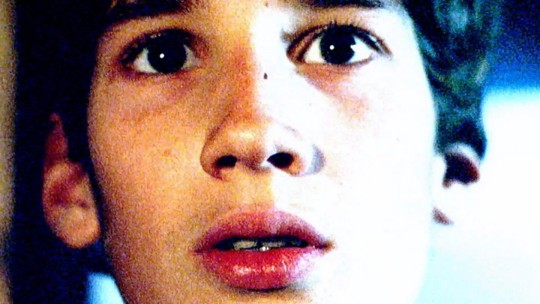








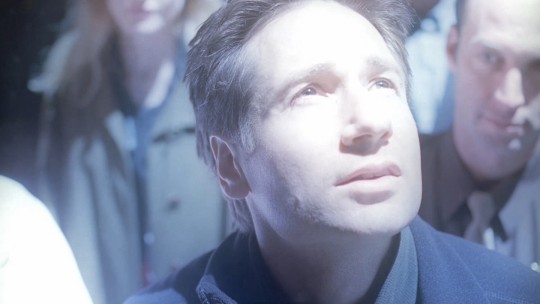
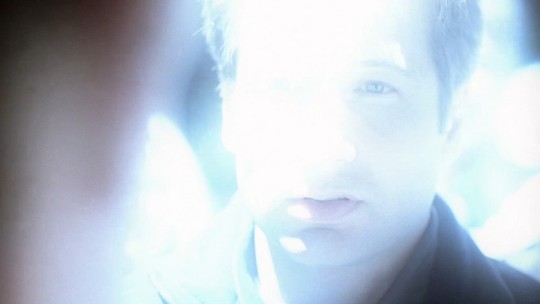


"I'M STILL WALKING INTO THAT ROOM."
on fox (+samantha) mulder, grief, & childhood trauma.
the x-files, 1994-2018 / the fall of the house of usher, steven berkoff / vanishing acts, jodi picoult / hard times, ethel cain / unknown / mysterious skin, scott heim / unknown / letter to an old poet, boygenius / soft sounds from another planet, japanese breakfast / sharp objects, gillian flynn
#the x files#txf#fox mulder#the fall of the house of usher#ethel cain#mysterious skin#boygenius#japanese breakfast#sharp objects#txfedit#dailytxf#web weaving#comparatives#samantha mulder#i am so not normal about this show
179 notes
·
View notes
Text
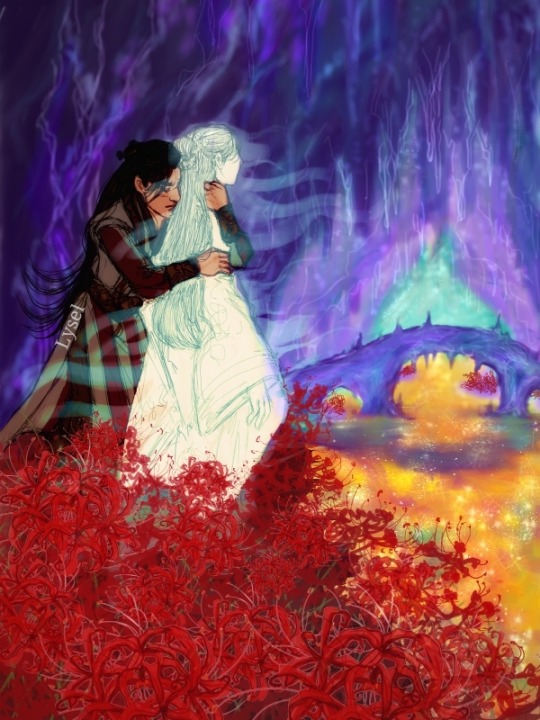
Love-stained skyward lotus flower*
My HCs for the Netherworld River of Oblivion (WàngChuan 忘川) and Bridge of Helplessness (NàiHé 奈何橋).
It can be taken literally or figuratively. DFS saving LLH's life in extremis
Or tracking him into the Netherworld to drag him back...unless it's to follow him to the other side.
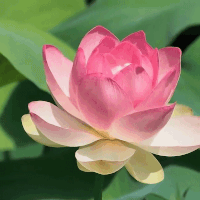
It's about how love can lead one to the Heavens as well as into Hells willingly, with a reference to Kurukullā (and possibly Rāgarāja, both known to transform worldly lust into spiritual awakening).
*Title comes from the MînNán/HokKien song 蓮花空行身染愛 by the really cool Taiwanese band 珂拉琦 Collage.
花 開佇你蹛亓樓 • 想 當時欲綴你走 • 多情亓雨崁著目睭 [...] • 日子過一工閣一工 • 你亓一切攏猶未放 • 越頭欲揣過去亓我 • 煞來袂記家己亓名 • 是我欲陪你流浪 • 長路終點滿天花雨 • 雺霧內底戇神 • 千年流轉你亓世界 • 自作多情亓儂 • 眼前地獄家己揀個 •天上 地下 人間 四方妖孽請恁退下 •這繁華世間 眾生有情人 • 有情生煩惱 甘願受罪 • 心狂閣火著 明知會艱苦 • 千錯萬錯 攏佮你無關
Flowers bloom in your house • I wanted to leave with you • the sentimental rain wets my eyes [...] • Days after days • I can't let go of anything about you • turning to search for who I've been • I realise that I've forgotten my own name • I've been wandering with you willingly • at the end of that long path the sky is filled with flowers • In the mist clarity hits • thousand years roaming your world • in delusion of my love reciprocated • I've chosen my own hell before my eyes • In the mortal realm, above and under, evildoers please back off • In this flourishing world all livings feel • feelings feed distress but the suffering is voluntary • my heart burning mad knew the anguish to come • Ten thousand mistakes are mine and have nothing to do with you.
...☕?/commission
#mysterious lotus casebook#di feisheng#li lianhua#li xiangyi#cdrama#fanart#cnovelartreblogs#lyrics translation#lysel's savage translations#buddhism#taoism#chinese folklore#taiwanese music band#珂拉琦#hokkien#lyselkatzcreations#headcanons#MLC headcanon#lycoris radiata#wikipedia:#At various periods throughout Japanese history Rāgarāja was invoked as a patron and symbol of homoerotic male desire
57 notes
·
View notes
Text
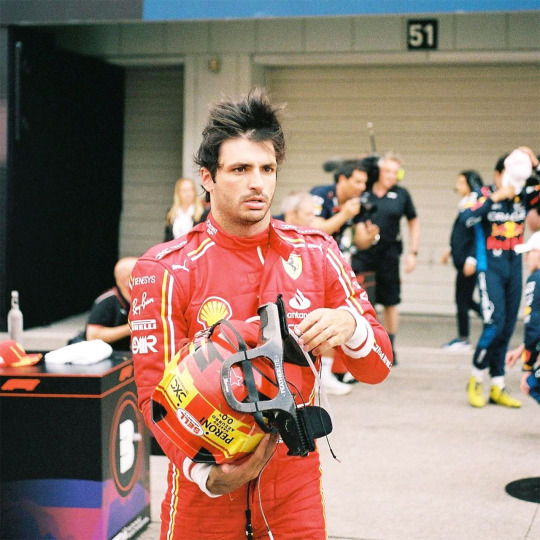


Carlos and Max during the 2024 Japanese GP
📸: arty_saniker [x]
#carlos sainz jr#max verstappen#ferrari#red bull racing#japanese gp#mp#have you been blessed with the sight of carlos' wild mysterious hair or max's eye crinkles today?#now you have 👉🏻👈🏻
56 notes
·
View notes
Text



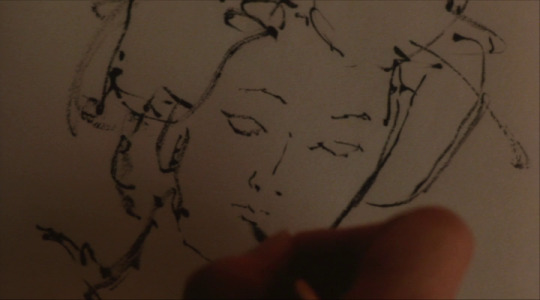






D坂の殺人事件 (D-Zaka no Satsujin Jiken / Murder on D Street), 1998.
Dir. Akio Jissoji | Writ. Akio Satsukawa (based on the book by Edogawa Ranpo) | DOP Masao Nakabori
#Murder on D Street#D坂の殺人事件#akio jissoji#ranpo edogawa#japanese film#murder mystery#which is. a misleading genre classification#be prepared for 60 minutes of shibari and lots of naked women and kinky sexplay
69 notes
·
View notes
Text
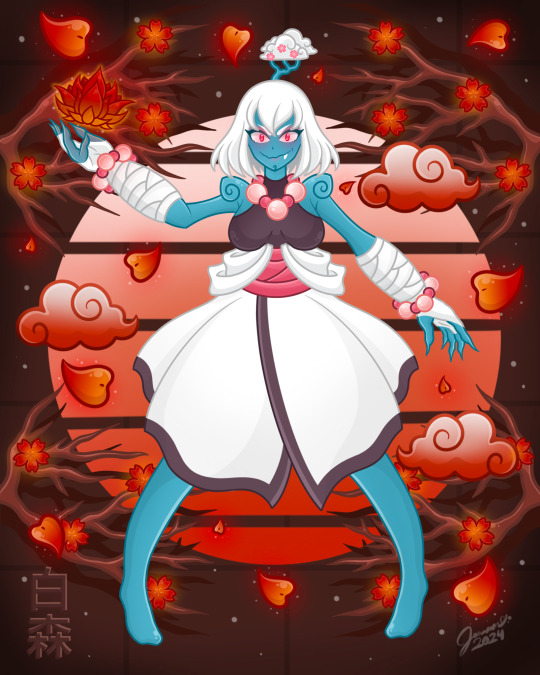
Shiromori 🪷
♡
♡
♡
#art#drawing#fanart#anime#inspiration#manga#mystery skulls#my style#tumblr art#artwork#fanart friday#drawdrawdraw#drawn#artists on tumblr#my art#digital art#indie music#cherry blossom#flowers#red art#japanese#kawaii#illustration#digital drawing#digital illustration#cool#instagood#instastyle
48 notes
·
View notes
Text
Monster
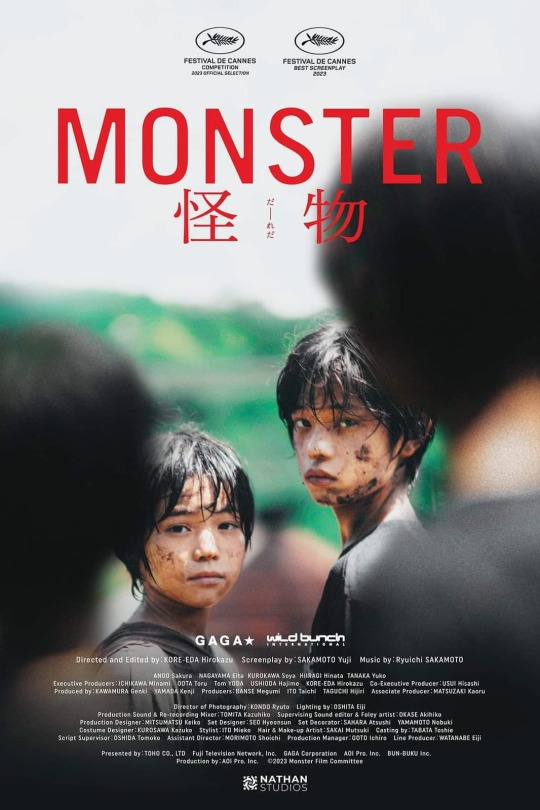
Movies watched in 2024
Monster (2023, Japan)
Director: Hirokazu Kore-eda
Writer: Yuji Sakamoto
Mini-review:
Monster is the type of movie-magic that only happens when the very best talents in each field come together. We have Hirozaku Kore-eda's masterful directing, Yuji Sakamoto's humane and intelligent writing, Ryuichi Sakamoto's magical score, and brilliant performances from some of the best actors in the world. And I'm not referring only to legends like Sakura Ando, Eita Nagayama and Yuko Tanaka, whose work here is as incredible as expected. In fact, newcomers Soya Kurokawa and Hinata Hiiragi are the ones who truly carry the movie, giving two of the best child performances I've ever seen. No other filmmaker in the world can choose and direct child actors like Kore-eda, and he proves it once again here. Beyond that, Sakamoto's script displays the beautiful complexity that characterizes his writing. He builds this haunting, heart-tugging mystery piece by piece, in a way that only he could. Tbh, I accidentally discovered the big twist when the film premiered at Cannes. But, while I believe the twist would have floored me in the best of ways if I had watched it without knowing anything, I still found myself enthralled while seeing the story unfurl. That being said, I still recommend not reading anything about the movie before watching it. To sum up, I thank the universe for gathering all these incredible people so they could make something as special as Monster.
#monster#monster 2023#kaibutsu#kaibutsu 2023#hirokazu koreeda#yuji sakamoto#ryuichi sakamoto#sakura ando#eita nagayama#soya kurokawa#hinata hiiragi#mitsuki takahata#akihiro tsunoda#shido nakamura#yuko tanaka#drama#mystery#thriller#japan#japanese film#japanese movie#movies watched in 2024
147 notes
·
View notes
Text
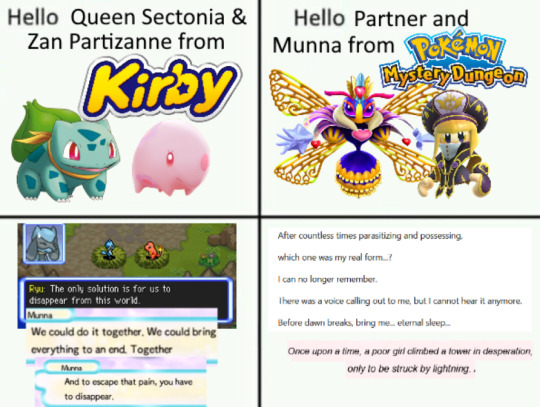
If I had a nickel for every time a second-party Nintendo game alluded to a character wanting to kill themselves, I'd have four nickels... which isn't a lot, but it's weird it even happened more than once.
#kirby#pokemon mystery dungeon#queen sectonia#zan partizanne#munna#eos partner#i couldn't find a japanese translation of zan partizanne's pause screen desc so#you're just going to have to take my word that she was trying to commit fork in an electrical socket#suicide#ask to tag#(<- for blacklist)
79 notes
·
View notes
Text
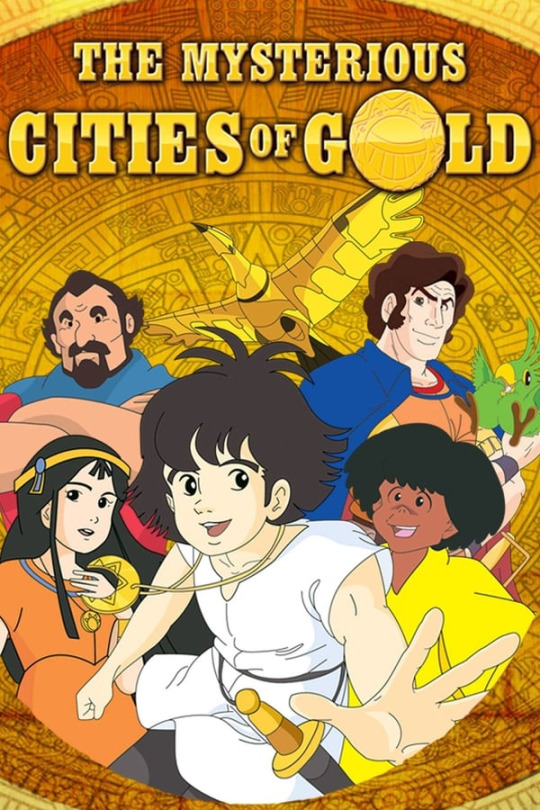
#tv shows#tv series#polls#the mysterious cities of gold#masako nozawa#mami koyama#junko hori#1980s series#japanese series#french series#have you seen this series poll
59 notes
·
View notes
Text
#detective conan#detective conan anime#detective conan series#case closed#Ep 218 - Megure's Sealed Secret (Part 2)#Megure's Sealed Secret (Part 2)#megure's sealed secret#episode 218#anime#anime series#anime tv show#mystery series#japanese tv show
64 notes
·
View notes
Text
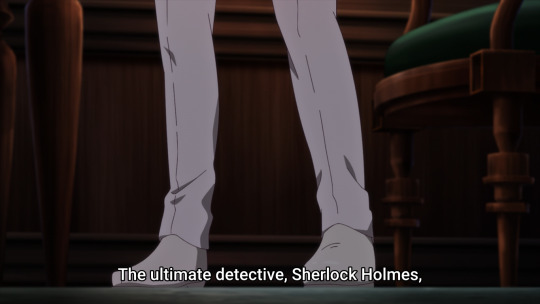


i know this was not their intention but all im hearing is that sheriarty mpreg is real in this universe
#WILL I EVER BE FUCKING FREE FROM SHERLOCK HOLMES CAN I EVER ESCAPE. PLEASE#THIS WAS JUST A FUNNY HAHA MYSTERY ANIME P L E A S E DONT BRING BACK THOSE FORBIDDEN NAMES IN MY LIFE#is2g japanese people love sherlock holmes at least as much as the british#Ron Kamonohashi's Forbidden Deductions#kamonohashi ron no kindan suiri
68 notes
·
View notes
Text
A fun fact about the Ancient Mew post:
I have my original from childhood because I saw the first 3 movies in theaters, and it’s beaten up and bent to heck and back because I was 3 years old when I got it. So i never scanned it because it’s in too poor of shape.
I was at an antique mall in May and saw the card in the scan for half market price and jumped right on it. I’ve been wanting a clean copy to have next to my sentimental one.
The other cards it was with were definitely fake, so my brother and I started looking into differences between the English and Japanese prints, comparing photos online, etc. I cannot figure out if the card is real or not. There’s also a chance it could be a reprint, because this card did have a promotional run for a second time in Japan. The print lines up better with the Japanese print of the card, and could be why the price was lower? It’s hard to say.
The Mew could potentially be the only fake card I put in this blog. I’m fine with it being fake because I have the original too, but it’s a complete mystery to me. By how it’s printed differently than other cards it’s potentially very easy to counterfeit.
#not tcg#just letting people in on this mystery#that I couldn’t solve#if you want more details we can get to the bottom of this#my moneys on Japanese reprint though
103 notes
·
View notes